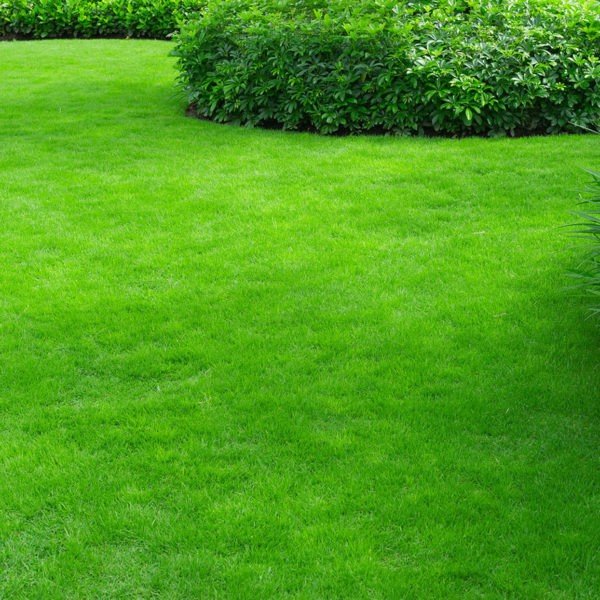
Importance of Potassium
Potassium in Turf
Potassium is required by the turfgrass plant in relatively large amounts compared to other nutrients. Potassium use is second only to nitrogen and of course the elements sourced from water and the atmosphere; carbon, hydrogen and oxygen. Potassium plays an important role in many key turfgrass processes and developmental phases, many of which have a major impact on plant resilience and stress resistance. As the underlying goal of turfgrass management is to sustain a healthy and vigorous turf surface that withstands the rigors of its’ particular sport, an agronomic understanding of potassium in the turfgrass plant is vital.
Potassium deficiencies are relatively common in turf situations. Research has shown that the sand based profiles commonly desirable in sportsturf construction are prone to losing potassium through ground water. This is a major problem in USGA type profiles where little organic matter is present to retain the required amounts of potassium. Regular irrigation further enhances losses through soil leaching and may ultimately result in losses to ground water exceeding potassium input, causing plant deficiency. Analysis of USGA type soil profiles in Australia has frequently shown than many profiles possess potassium levels below the minimum requirements of the plant. In addition to losses to ground water, frequent mowing and removal of clippings on intensively managed turf surfaces such as golf and bowling greens depletes plant potassium reserves due to losses in removed clippings. It is estimated that up to 1.3kg of potassium per 100m2 is lost annually through the removal of mower clippings.
Symptoms of potassium deficiency will present themselves in many ways depending on the time of year, the turf species and the general health of the plant. As potassium plays an integral role in key developmental functions related to plant hardiness and resilience, the first sign of potassium deficiency will often present as a generally unthrifty and unresponsive growth habit, particularly under environmental or physical stresses. Often the signs that potassium is deficient will only become obvious sometime after soil deficiency actually occurs as turfgrass plants will often possess extensive reserves of potassium within their tissue. This results from a process known as luxury consumption, when the plant uptakes much more potassium than is required during times of high availability. When plant available potassium is low, the plant first exhausts internal reserves before any symptoms become evident. Some of the key signs of potassium deficiency are:
- Reduced resilience in cold and frost
- Poor heat and drought resistance
- Flaccid, stunted root system
- Lack of colour and general vigour
- Increased susceptibility to diseases including brown patch and winter fusarium
While it is not technically a physical component of turfgrass cells, potassium is an essential constituent in many key plant developmental processes, many of which play a major role in stress resistance and general plant hardiness. Potassium is involved in:
- Carbohydrate production, transport and storage. This is important during the winter months when photosynthesis slows and energy efficiency is
- Amino acid and protein synthesis. The physical fabric of plant tissue largely comprises of proteins which in turn are made up of complex amino acid chains. Amino acid production must be sustained at optimum levels during periods of physical stress to avoid the plant breaking down existing proteins to synthesise new proteins at the expense of existing tissue
- The regulation of transpiration. Potassium is a key component in the opening and closing of stomata which controls transpiration, the process by which the plant cools itself. When deficiency occurs, the plants’ ability to cool itself can be compromised, limiting drought and heat
- Enzyme production and function. As a major catalyst in key enzymatic reactions, potassium is an essential component of plant metabolism and hormone related biological
The only way for turf managers to truly understand the Nutritional requirements of their turfgrass sward is to undertake soil and tissue analysis. Through a comprehensive turf specific soil analysis package, actual potassium levels within the soil can be determined. However as potassium present within the soil is often unavailable, a Plant Tissue Analysis will offer as accurate view of plant tissue composition, and can highlight any deficiencies that may be present.
When it comes to selecting appropriate potassium sources for turfgrass application, turf managers have many options available to them. The many available potassium sources all possess different characteristics with regards to analysis, solubility, plant safety and environmental impact. Some of the most common potassium sources are:
| K Source | % K | Salt
Index |
Longevity | Agronomic Im-
pact |
| Muriate of Potash
(Potassium Chloride) |
50 | 120 | 4 – 6 weeks | High |
| Potassium Nitrate | 38 | 74 | 4 – 6 weeks | Moderate |
| Potassium Magnesium
Sulphate (K-Mag) |
38 | 43 | 4 – 6 weeks | Low |
| Sulphate of Potash | 41 | 46 | 6 – 10
weeks |
Low |
| Potassium Carbonate | 35 | 20 | >8 weeks | Very Low |
| Coated Potassium | 40 | 46 | 8 – 12
weeks |
Very Low |
Now is the perfect time to be toughening up the plant through applications of fertilisers with an N:K ratio of 1:1 or 1:2. Lawn Addicts stock a vast range of turf specific fertilisers, ideal for autumn application. Message Lawn Addicts about potassium fertiliser options for preparing your turf surfaces for winter, or visit https://www.lawnaddicts.com.au to view our fertiliser range.
References
Thanking Globe Growing Solutions for access to their Technical Bulletin
Handreck K, Black N, 2010, Growing Media for Ornamental Plants and Turf (Fourth Edition), University of NSW Press Limited, Sydney, NSW.
Beard JB, 1973, Turfgrass: Science and Culture, Prentice Hall Publishing Incorporated, Englewood Cliffs, NJ.
